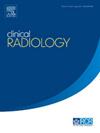Clinical and sonographic factors influencing diagnostic yield of ultrasound-guided core biopsy of cervical lymph nodes
IF 1.9
3区 医学
Q2 RADIOLOGY, NUCLEAR MEDICINE & MEDICAL IMAGING
引用次数: 0
Abstract
AIM
Cervical lymphadenopathy can indicate various benign or malignant conditions. While ultrasound-guided core biopsy is commonly used for diagnosis, its effectiveness can vary. Our study aimed to determine factors that affect the diagnostic yield of this procedure, potentially guiding appropriate patient referrals towards either more invasive diagnostic procedures, such as open biopsy or less intensive approaches like ongoing follow-up.
MATERIALS AND METHODS
A retrospective study was conducted evaluating ultrasound-guided core biopsies performed for cervical lymphadenopathy at a single institution. Imaging features and technical details were documented. Two radiologists collected data from formal procedure reports and recorded sonographic images. Data were then correlated with histopathologic reports.
RESULTS
The study included 136 patients with final diagnoses of lymphoproliferative disease (95 patients, 69.8%), reactive lymphadenopathy (24 patients, 17.6%), and carcinoma (17 patients, 12.5%). Twenty-four of the initial biopsies were nondiagnostic (17.6%), requiring diagnosis through surgery, follow-up, or repeated biopsy. Of the 24 nondiagnostic biopsies, 17 were eventually identified as reactive lymph nodes, and 7 harboured lymphoproliferative disease. All carcinoma cases were detected on the initial biopsy.
Larger lymph node size correlated with higher diagnostic yield (P < 0.01). No correlation was found with needle gauge (P = 0.13), proximity to large vessels (P = 0.68), or overshoot potential (P = 0.26).
CONCLUSION
Our study results show that smaller lymph node size and the presence of a fatty hilum are correlated with reduced diagnostic yield. Patients with unfavourable characteristics should be considered for imaging surveillance, fine-needle aspiration (FNA), or an open biopsy.
影响超声引导下颈淋巴结核活检诊断率的临床及超声因素。
目的:颈淋巴肿大可提示多种良性或恶性病变。虽然超声引导下的核心活检通常用于诊断,但其有效性可能有所不同。我们的研究旨在确定影响该手术诊断率的因素,潜在地指导适当的患者转诊到更具侵入性的诊断程序,如开放活检或不那么密集的方法,如持续随访。材料和方法:回顾性研究评价超声引导下的宫颈淋巴结活检。记录了成像特征和技术细节。两名放射科医生从正式的程序报告中收集数据并记录超声图像。然后将数据与组织病理学报告相关联。结果:136例患者最终诊断为淋巴细胞增生性疾病95例(69.8%),反应性淋巴结病24例(17.6%),癌17例(12.5%)。24例(17.6%)初始活检不能诊断,需要通过手术、随访或重复活检进行诊断。在24例非诊断性活检中,17例最终确定为反应性淋巴结,7例存在淋巴增生性疾病。所有癌病例均在初次活检中被发现。淋巴结大小越大,诊断率越高(P < 0.01)。与针规(P = 0.13)、靠近大血管(P = 0.68)或超调电位(P = 0.26)无相关性。结论:我们的研究结果表明,较小的淋巴结大小和脂肪门的存在与诊断率降低有关。有不良特征的患者应考虑影像学监测、细针穿刺(FNA)或开放式活检。
本文章由计算机程序翻译,如有差异,请以英文原文为准。
求助全文
约1分钟内获得全文
求助全文
来源期刊

Clinical radiology
医学-核医学
CiteScore
4.70
自引率
3.80%
发文量
528
审稿时长
76 days
期刊介绍:
Clinical Radiology is published by Elsevier on behalf of The Royal College of Radiologists. Clinical Radiology is an International Journal bringing you original research, editorials and review articles on all aspects of diagnostic imaging, including:
• Computed tomography
• Magnetic resonance imaging
• Ultrasonography
• Digital radiology
• Interventional radiology
• Radiography
• Nuclear medicine
Papers on radiological protection, quality assurance, audit in radiology and matters relating to radiological training and education are also included. In addition, each issue contains correspondence, book reviews and notices of forthcoming events.
 求助内容:
求助内容: 应助结果提醒方式:
应助结果提醒方式:


